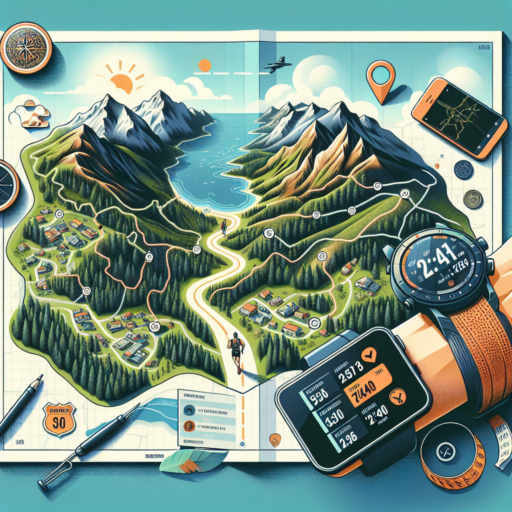Can I download maps from AllTrails?
Yes, downloading maps from AllTrails is not only possible but also one of the app’s most appreciated features among outdoor enthusiasts. This functionality enhances the outdoor experience by providing access to detailed trail maps even when offline. Whether planning a hike, mountain bike ride, or a backcountry adventure, the ability to download maps directly to your device ensures that you have the necessary trail information at your fingertips, regardless of cellular service availability.
Steps to Download Maps from AllTrails
To download maps from AllTrails, users should first ensure they have an AllTrails Pro membership, as this feature is exclusive to Pro members. Following this, the process is straightforward:
- Search for the desired trail or select one from the curated lists.
- On the trail’s page, look for the Download button.
- Select the map area you wish to download, then click Save.
Once downloaded, these maps are accessible directly from the user’s profile under the ‘Downloads’ section. It’s important to highlight that AllTrails allows users to download different types of maps depending on their activity or preference, such as topographic maps, satellite imagery, or a combination of both. Furthermore, AllTrails Pro members can also access map layers like trail conditions or heatmaps showing trail popularity, which can be downloaded alongside the basic trail map for enhanced navigation and planning.
Can I download AllTrails map to Garmin?
With the increasing demand for seamless outdoor navigation, the question, «Can I download AllTrails map to Garmin?» has become particularly relevant for adventurers looking to blend the comprehensive trail information from AllTrails with the robust hardware of Garmin devices. The integration between AllTrails maps and Garmin devices represents a significant leap forward in enhancing the outdoor experience, leveraging the strengths of both platforms.
Initiating the process requires an understanding of the tools and steps involved. Firstly, users must ensure that they have a compatible Garmin device and an active AllTrails subscription. While AllTrails offers a wide array of trail maps and routes, transferring these directly to a Garmin device involves converting the desired trail into a GPX file—a universally compatible format that Garmin devices can recognize and use.
To facilitate this, AllTrails provides an easy-to-use export function for its users. By navigating to the specific trail page on the AllTrails website or app, users can select the Export GPX option, which prepares the file for transfer. Following this, the GPX file can be imported into Garmin BaseCamp or directly to the device if it supports USB mass storage. This method ensures that users can enjoy detailed AllTrails routes with the reliability and convenience of their Garmin GPS devices, bridging the gap between digital trail resources and practical, real-world navigation.
How do I download a trail map from Google maps?
Downloading a trail map from Google Maps is a convenient way for hikers, bikers, and outdoor enthusiasts to ensure they have reliable navigation even without internet access. Google Maps allows users to download specific areas for offline use, which can include detailed trail information. This feature is particularly useful for exploring remote areas where cellular service is uncertain.
Steps to Download a Trail Map from Google Maps
- Open the Google Maps app on your smartphone or tablet.
- Search for the area or specific trail you wish to download.
- Tap on the name of the place or trail at the bottom to bring up additional information.
- Look for the Download button or tap on the three-dot menu to find the option to download the map.
- Select the specific area you wish to download by pinching or zooming in/out on the screen. Keep in mind, the larger the area, the more storage it will require on your device.
- Once you’ve adjusted the area to your satisfaction, tap Download.
After the map has been downloaded, it will be available for offline use for up to 30 days. Google Maps automatically updates downloaded maps when connected to Wi-Fi, ensuring that you have the most current information available. Remember, while Google Maps provides valuable trail data, it’s a good idea to cross-reference with local park maps or websites to confirm trail conditions and closures.
No se han encontrado productos.
How do I download trails to my Garmin?
Downloading trails to your Garmin device enhances your outdoor experiences by guiding you through unknown terrains confidently. Garmin devices, known for their precision and reliability, offer a myriad of options for outdoor enthusiasts to explore the world around them. Whether you’re planning a hike, a bike ride, or a trail run, having the right trails downloaded to your Garmin can make all the difference in navigating your adventure successfully.
Before you start, ensure your Garmin device is fully charged and has sufficient storage space. Most Garmin outdoor devices are compatible with GPX files, the standard format for storing geographic information like trails and waypoints.
To begin the process, connect your Garmin device to your computer using a USB cable. Once connected, it should appear as a connected drive on your computer. The simplicity of transferring files to your Garmin device is one of its most user-friendly features. Navigate to the Garmin device’s internal storage, typically listed as the ‘Garmin’ folder in the device’s drive. Look for the ‘GPX’ folder; this is where you’ll drop your downloaded trail files.
Downloading trails for your Garmin device can generally be accomplished through various platforms and forums dedicated to outdoor activities. Websites like AllTrails, TrailForks, and the Garmin Connect community itself are treasure troves of downloadable GPX files tailored to different activities. Once you have selected and downloaded the desired trail files to your computer, simply drag and drop them into the ‘GPX’ folder in your Garmin device’s storage. After safely ejecting your device from the computer, power on your Garmin, and navigate through its menu to the ‘Trails’ or ‘Navigation’ section to find your newly uploaded routes.



